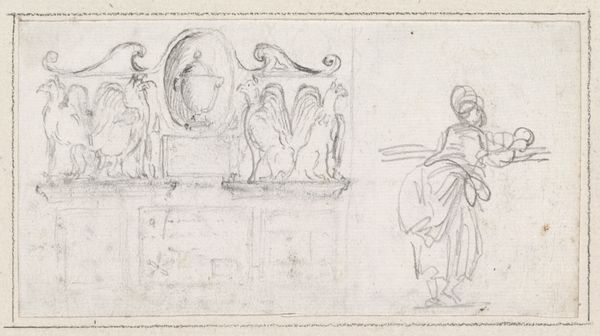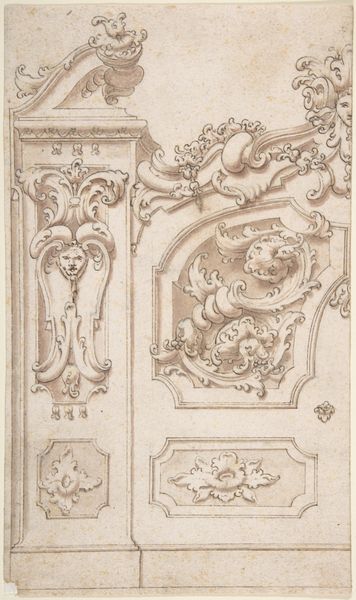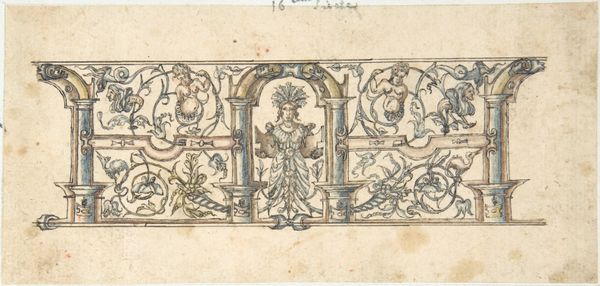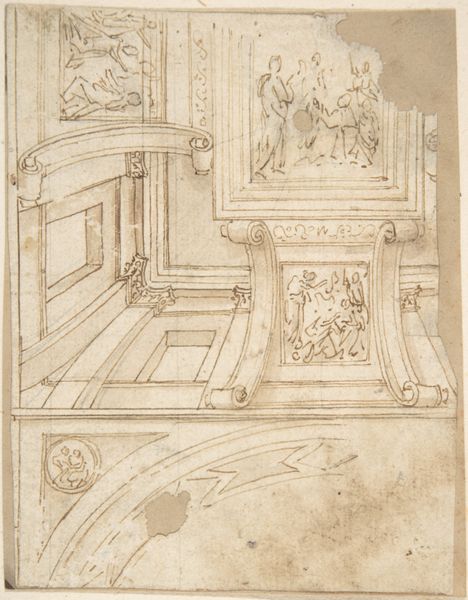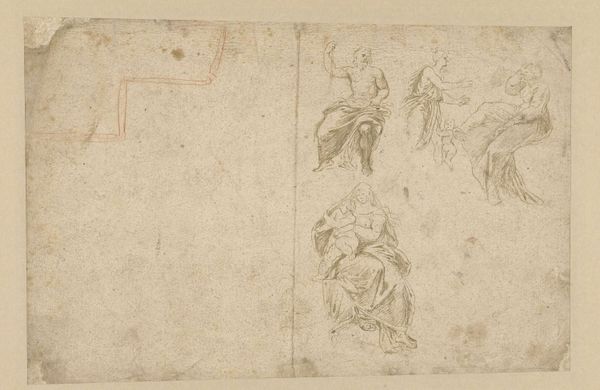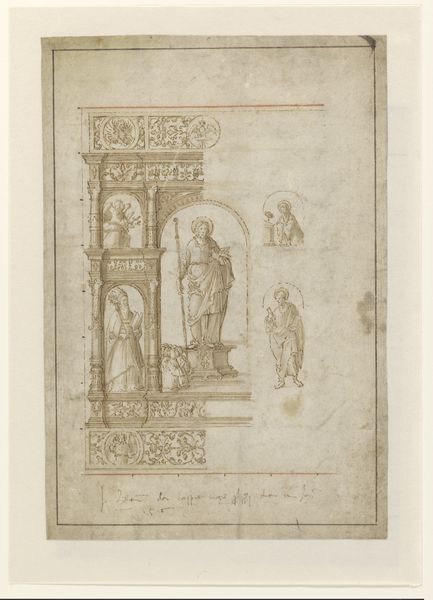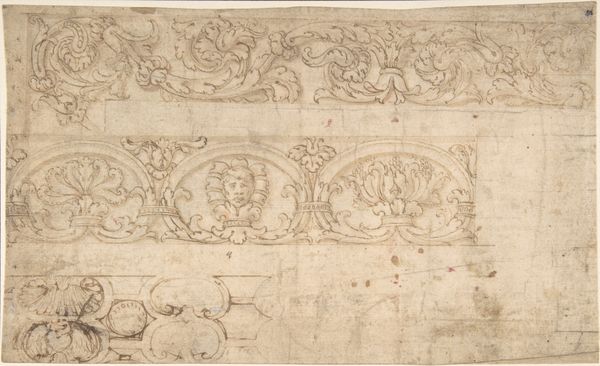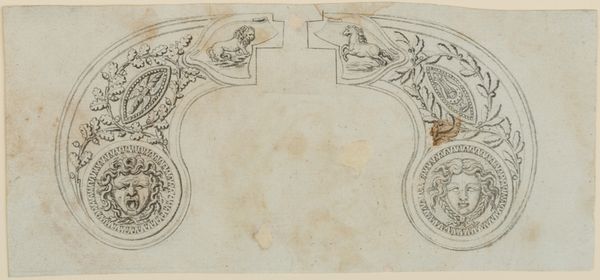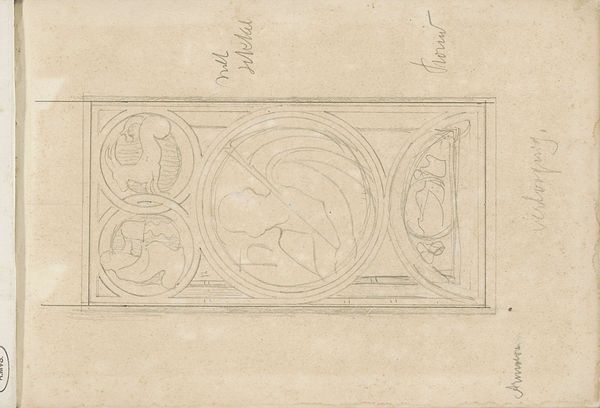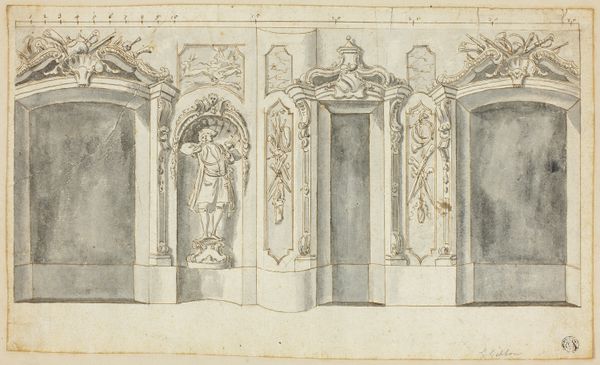
Design for Three Consoles Decorated with Foliage and Volutes and a Console with a Satyr Head Surmounted by Three Human Figures, Garland and Foliage 1609 - 1660
0:00
0:00
drawing, print, ink, architecture
#
drawing
#
allegory
#
baroque
# print
#
human-figures
#
figuration
#
11_renaissance
#
ink
#
architecture
Dimensions: 7-1/16 x 10-13/16 in. (18 x 27.4 cm) irregular borders
Copyright: Public Domain
Editor: Here we have Agostino Mitelli's "Design for Three Consoles Decorated with Foliage and Volutes and a Console with a Satyr Head Surmounted by Three Human Figures, Garland and Foliage," created sometime between 1609 and 1660. It's an ink drawing, showcasing ornate architectural designs. I am struck by the contrast between the rigid architectural elements and the flowing organic forms. What do you see in this piece? Curator: This drawing provides a lens through which we can explore the performative nature of power and class in the Baroque era. Architecture wasn't just about building; it was about constructing social hierarchies. How do you see these "consoles" functioning within a larger societal framework? Consider the figures, both human and mythological; what stories are they telling? Editor: Well, the figures on the right definitely evoke a sense of classical mythology and grandeur. But the juxtaposition with the more structured console designs is interesting. Is Mitelli perhaps commenting on the role of artifice in projecting authority? Curator: Precisely! The Satyr figure, a symbol of wildness and the 'natural,' being literally burdened by the weight of three human figures can suggest a complicated hierarchy, speaking perhaps to the subjugation of marginalized bodies within a very constructed societal vision. Think of this design as an early form of propaganda. Who do you think these designs would have been for, and what impact might they have had? Editor: Perhaps for wealthy patrons, reinforcing their dominance and solidifying their legacy? Seeing it that way really casts the drawing in a new, more critical light. Curator: Exactly! The drawing embodies the intersections of power, representation, and the subtle but ever-present negotiation between freedom and constraint in the era of its creation. Editor: I learned to look past the beauty and into what power dynamics art could reflect. Curator: Yes, now we understand art reflects a reality and in return it has agency in making it.
Comments
No comments
Be the first to comment and join the conversation on the ultimate creative platform.
